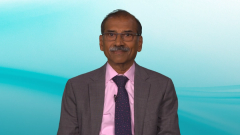
Multiple Myeloma Management: Addressing Disparities in Care
Before closing out their review on the management of multiple myeloma, panelists consider disparities in care and share how these barriers are being addressed.
Episodes in this series

Transcript:
Sundar Jagannath, MD: Josh, with all of these newer treatment strategies coming, and knowing the incidence of myeloma is much more common in the African American population, an underserved population, what are some of your thoughts on making sure that these treatment options are readily available to an underserved population?
Joshua Richter, MD: I’m really glad you brought that up. This is a major issue that we have known [about] for many years, and one of the reasons why I am honored to be part of an institution like Mount Sinai [Hospital in New York, New York] is because it puts thoughts like this first, and the way that we have to achieve this is [by approaching it from] different fronts. One [way] is at big levels, having big projects that we have laid out money [for] with the support from colleagues, including pharmaceutical colleagues, to help tackle this. But a more important level, from my standpoint, is the grassroots front, going to the patients themselves, telling them about the opportunities, and making them available. [It’s] having some of our satellite sites in a variety of places in the greater New York area with higher rates of patients in the underserved populations. We can bring those types of therapies directly to them and provide these options along with a support staff of pharmacists, social workers, and a whole team approach so that we can provide a full [complement of support to] everyone who has myeloma.
Sundar Jagannath, MD: I think the challenges in the underserved population are many. No. 1 is participating in clinical trials; there is usually a reluctance to participate. No. 2 is coming to a center and actually receiving the treatment, [then] going back to work, and there are also financial implications for participating in a clinical trial. And, of course, treatment access [and the need to be] closer in the neighborhood, and then also being administered and cared for by people similar to them. So utilizing the facilities in the neighborhood to administer clinical trials would be an important component. Would you agree?
Joshua Richter, MD: I could not agree more.
Sundar Jagannath, MD: Thank you to our faculty for joining us in this lively discussion on the treatment of patients with multiple myeloma, brought to you by the Cancer Network. And thank you to our viewing audience. We hope you found this interactive discussion to be informative and beneficial to your clinical practice.
Transcript edited for clarity.
Newsletter
Stay up to date on recent advances in the multidisciplinary approach to cancer.





















































































